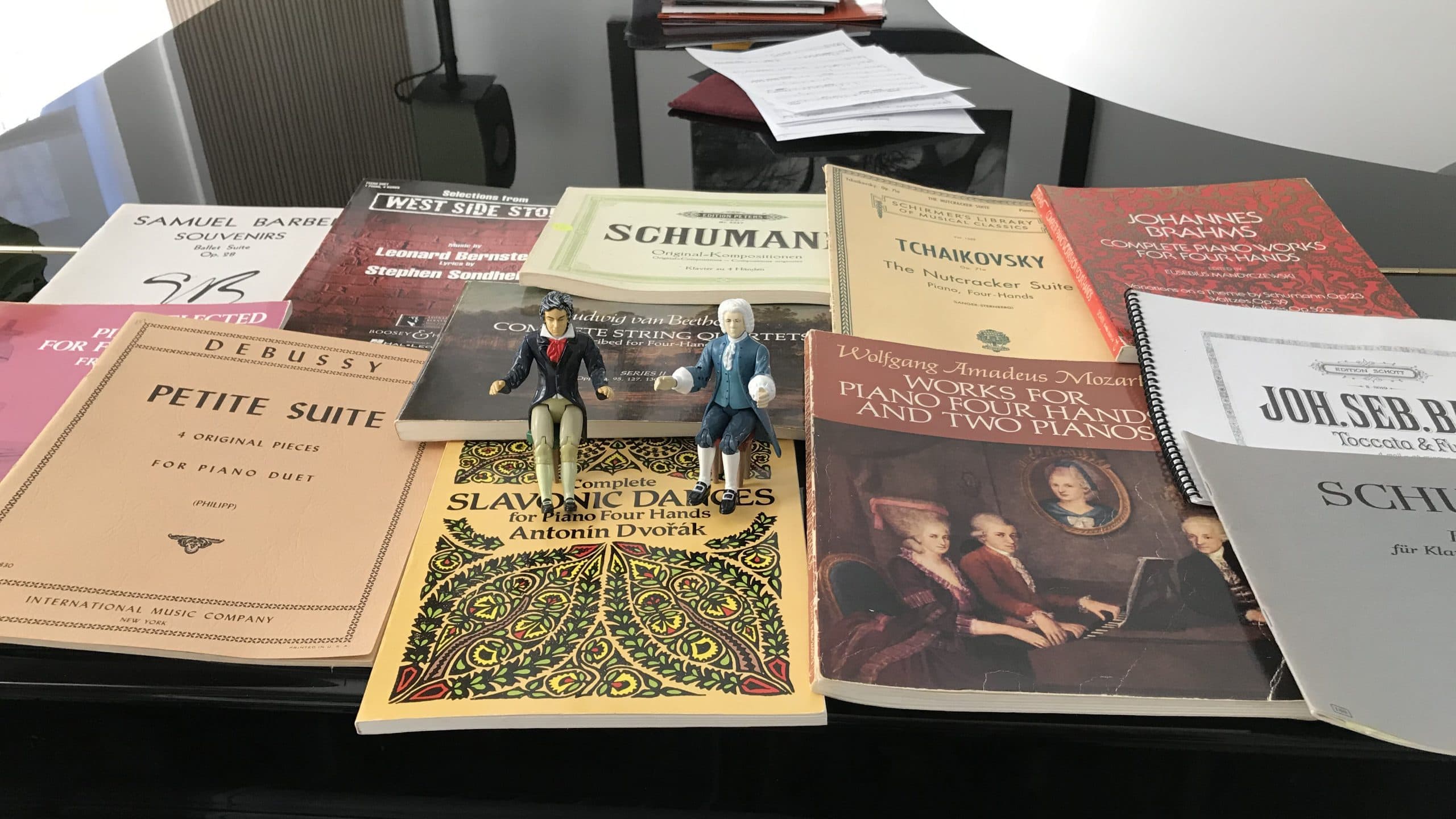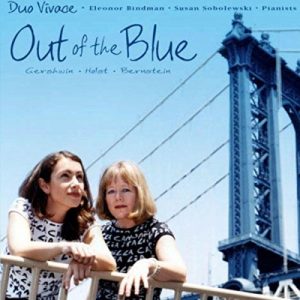My first duets were little 8-measure Russian folk songs but they already offered glimpses into a bigger world. Here I was, a struggling beginner, meekly navigating an ocean of black and white keys while trying to dutifully count 1-2-3-4 and keep track of the tiny fingering numbers on the page. Then suddenly my teacher would get up from her chair, come over to the left of the keyboard and play along with me. Those moments were magical: new sounds were added to mine and everything seemed in perfect order. I was making music.
Over the years, my appreciation for playing the piano with a partner has become a lot more informed. I came to the U.S. as a teenager and started teaching piano when I was in college. Piano duets were an important part of my tool kit from the start. I would make up simple accompaniments for my students’ beginner pieces and play along. If I taught siblings, they always had a duet assigned. Adult students, some of whom were actually unaware of the 4-hands possibility, were thrilled to discover it, reading through the uncomplicated works like Schubert’s dances, Debussy’s “Petite Suite,” Faure’s “Dolly” along with pieces from piano-duet anthologies that I always had in my teaching library. While working on my Master’s degree and attending Vladimir Feltsman’s masterclasses, I met Susan Sobolewski who became a dear friend, my Duo Vivace partner and a recording collaborator for our Out of the Blue album. After decades of hand-crossing and elbow-poking, a few arrangements and some recordings, 4-hand playing still feels like the best way of sharing what I love most.
Three years ago I decided to make a new piano duet arrangement of Bach’s 6 Brandenburg Concertos, to replace the existing one by Max Reger. Over the years, I tried to play through the Reger with my partner several times and it always seemed awkwardly done: the Primo part was hard to read with clusters of chords and little visual trace of the actual counterpoint whereas the Secondo mostly consisted of the low string parts in octaves. I looked for performance evidence and found only a couple of YouTube videos of separate movements and only one complete although painfully ponderous version in a dark church. So I set out to suitably edit the old version but ended up starting from scratch with an orchestral score. You can read more about the process HERE.
Upon hearing the news of my project, many people would ask: “Why not for 2 pianos?” Certainly two pianos would be much easier to arrange for. No need to decide which string parts to omit completely, no need to transpose up or down an octave, no need to worry about density of texture in the middle register or about dividing a harpsichord cadenza between two players. It would have also been easier to have an entire keyboard for each pianist: no feeling crowded, no deciding whose hand goes into an awkwardly high or low position, no issues of balancing different registers or exact sound/touch matching when sharing the same theme. Yet needing a second piano is a huge logistical problem, in the home as well as in a concert or recording setting whereas as a 4-hand version, this music can be enjoyed at home with a friend whenever you are both available. My goal, after all, was to replace the Reger version, finally giving piano partners a significant body of work besides those of Mozart and Schubert. …

